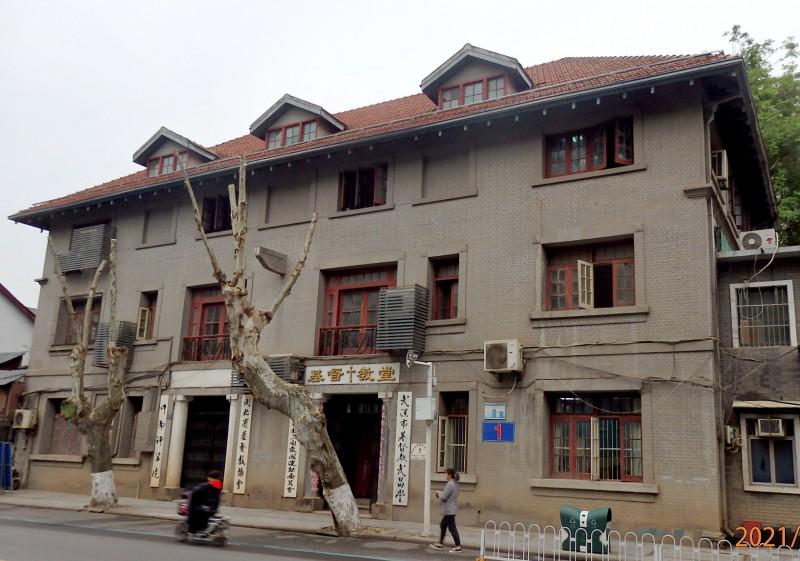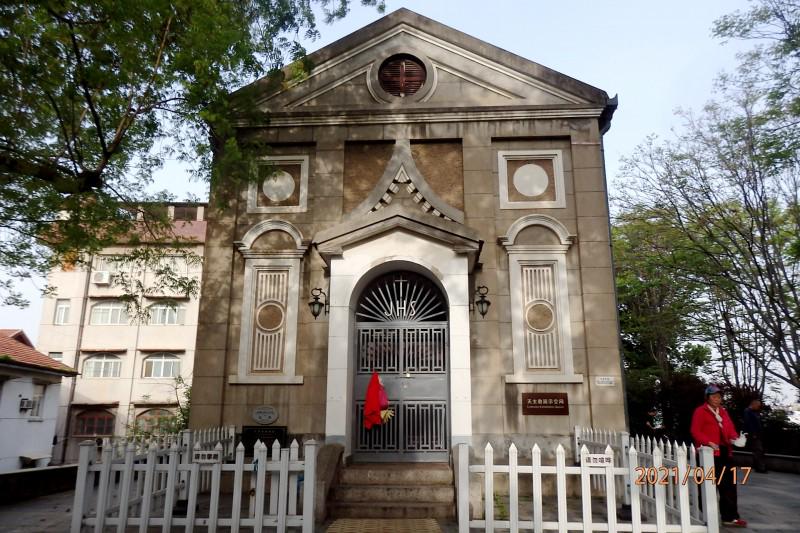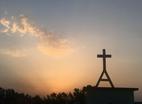"In the Yellow Crane Tower, the jade flute is being played and the plum blossoms fall in Jiangcheng in May." The poem was written by the famous Chinese poet Li Bai about the renowned Tower in Wuhan. The history of archaeological discoveries in Wuhan can be traced back to the early and middle Neolithic Age between 8000-6000 years ago.
Wuhan has outstanding historical buildings, mainly composed of financial, religious, diplomatic, residential, industrial, and commercial buildings in the period from 1861 to the 1950s when Hankou was opened as a treaty port. It integrates the classical romanticism of Western architecture and the implicit elegance of national architecture, which is comprised of Christianity, including excellent architectural relics of Catholicism, Protestantism, and the Orthodox Church, such as church buildings, hospital buildings, Christian organizations, etc.
In mid-April 2021, I visited some churches in Hubei Province, and Wuhan was the first stop. Below, the ten Christian buildings and historical relics will be introduced one by one. Some of them are real cultural relics, which no longer belong to any church, nor are meetings or other religious activities being held there, while some are still being used by Christian churches or Christian organizations and medical charities.
1. Wuchang Church
Wuchang Church is located at No. 221, Minzu road, center of Wuchang City. It is a typical Chinese three-story building with green brick, red tiles and a large roof. It was built in 1921, covering an area of 380 square meters, with a brick and wooden structure. The building was originally the United States Navy Christian club, and then the site of the Wuchang Youth Men's Christian Association (YMCA). It was built exactly 100 years ago. The exterior and internal structure of the church maintained the same appearance as it was a hundred years ago, with wooden stairs and wooden floors. The main hall is not very big but it highlights the glory and dignity of the sacred temple, and there is also a bookstore of the Wuhan CC&TSPM (Committee of Christian Three-Self Patriotic Movement of Wuhan and the Christian Council of Wuhan) in Hubei Province, on the first floor.
I was particularly honored to meet Guo Yongjie, the senior pastor of the church and the president of the Wuhan Christian Council, one of the first batch of graduates of Nanjing Union Theological Seminary after China's reform and opening up. He began to serve God when he was 22 years old and has been serving for 36 years in the church.
Although the buildings in Wuchang Church are old, the church invested much money in repairs and maintenance, as well as renovation of some old facilities and equipment. I noticed on the Lord's day that the believers who came to the gathering according to the requirements of epidemic prevention entered the church with high enthusiasm after registering, scanning codes and checking their temperature. From the first floor to the second floor, the main hall was full to the brim. At present, the church is required to have at most two services every Sunday due to epidemic prevention, one hour apart, after a disinfection process.
For this old church, several years ago, the Wuhan CC&TSPM had replaced several church properties used by Wuchang District Education Commission with the District Education Commission and obtained the property right of the former Xujiapeng Primary School. However, due to the lack of funds for building a new church, it has not been realized yet.
2. Priest's Apartment cultural relic on Garden Hill
Under the rain, I saw the Wuchang Tanhualin, a seemingly common street; it is an old street formed in 1371, which has only 1200 meters but in the recent hundred years incredibly accommodated dozens of old buildings: Churches, hospitals, schools, famous residences, gardens, consulates, etc., almost every place records the modern history of Wuhan. Strolling up the Garden Hill with an umbrella, I saw a two-story building with intersections of teal and reddish brick walls and red tiles made with a combination of Chinese and Nordic styles. This is the "Wuchang Priest's Apartment on Garden Hill", one of the cultural relics under protection in Wuhan.
Catholicism was first introduced to Hubei in 1587, and Wuhan in 1635, according to the book Historical Evolution of the Catholic Diocese in Hubei written by Liu Zhiqing. Garden Hill had always been the power command center of the Catholic Church in Wuhan. This "Priests' Apartment" was built in the 1930s and was the residential building of the Swedish senior priest. It should have been called "parsonage", but I do not know why it is called "Priests' Apartment". From the loftiness of this apartment, it could be seen that this was a remarkable landmark building during those years, and also a symbol of the development of Catholicism in Hubei Province and Wuchang.
It is a pity that the "Priests' Apartment" today, like many parishes across the country, no longer belongs to the Catholic Church.
3. The Chongzhen Church
Located at No. 44, Tanhualingojia Camp, Wuchang District, Chongzhen Church is only a few hundred meters away from the Catholic parsonage. It is the oldest existing Protestant church in Hubei Province and Wuhan City. The church was built by a London missionary, Griffith John in 1864. According to the architectural inscription of Wuhan Municipal People's Government, it was a Gothic building, with a Latin cross-shaped plane, and the doors and windows are made of double-core rolls and stained glass, which have been modified.
Ms Hu Liuming, a member of the Democratic League, Hubei Writers' Association, Wuhan Writers' Association and an urban cultural research expert, has a detailed record of the Chongzhen Hall in her book Tanhualin, especially about its founder, the British Griffith John. "Yang Gefei (1831-1912), English name Griffith John, was a British Christian Congregationalist and a missionary of the London Missionary Society. He went to Shanghai in 1860 and arrived in Hankou on June 21, 1861, where he built chapels, among which were Shou En Church, Tai Ping Lane, Da Jia Street, etc. He went to Wuchang in 1863, bought land in Gejia camp in 1864, and built Chongzhen Church in 1865."
Services are still being held in Chongzhen Church. According to the Wuhan Municipal People's government, it is also one of the learning centers of the "Three Self-Patriotic Church".
4. Renji Hospital
Christian Renji Hospital is a light-yellow two-story building. It is now affiliated with Shanghai Jiaotong University, School of Medicine, and located at No. 4 Huayuan mountain, Wuchang District.
Renji Hospital was built in 1895, with a mixed structure of brick and wood, with a building area of about 3,146 square meters (0.77 acres). It was a typical Christian charity medical institution presided over by Griffith John of the London Missionary Society. According to reports, the hospital includes an outpatient department and an inpatient department in two parts. The outpatient department building is a two-story brick and wood structure with a pitched roof and rectangular plane. The bottom circle is composed of continuous Roman coupons and the upper part is composed of simplified Doric column division. The east side of the overpass is connected with the inpatient department. The inpatient department is a two-story brick and wood structure with a horseshoe-shaped plane. In the middle is a sunken courtyard, surrounded by corridors. The back profile adopts the arch type with double-height coupons and is decorated with relief. The interior is made of wood, with a wooden staircase in the center of the hall with multiple fireplaces and a red tile sloping roof.
During the revolution of 1911, Renji Hospital was involved in the treatment of wounded civilians and soldiers. In 1931 during the Wuhan flood disaster, the London Missionary Society established the disaster relief headquarters in Wuchang. After the fall of Wuhan, the Japanese army occupied this place as a Japanese hospital. After the liberation, it belonged to the Hubei Provincial Hospital of traditional Chinese medicine, and it still witnessed and played a role.
Renji Hospital is now listed as one of the "Street History and Culture Museums" in Wuhan. However, I have been there twice and could not enter to visit, so I could only see from the outside.
5. Canossian Daughters of Charity Chapel
The top of the Garden Hill has a single-story, greyish-white brick and wood building with a distinctive classical Christian architectural style: Canossian Daughters of Charity Chapel.
The chapel built in 1888 was relatively small, with a long hall single-layer brick and wood structure, a floor area of 130 square meters and an area of 150 square meters. The central symmetry method was adopted for the layout and elevation of the chapel: facade arch door, window, line, cornice treatment, etc.
The Canossian Daughters of Charity association was founded in Italy in 1806 and headquartered in Rome. In 1868, the organization at the invitation of Ming Wei Du, bishop of the Catholic pastoral district of Hubei, sent church personnel to Wuhan. In 1888, the land was purchased in Garden Hill and a branch of the Canossian Daughters of Charity association was established. A nursery, a catechism class, a crafts institute and other public welfare services were set up and a residential area for Daughters of Charity and the Daughters of Charity Chapel were built. In 1948, religious activities ceased but the chapel is still in Wuhan.
Behind the chapel, I saw the ruins of the observatory, which is old but still has a scientific appearance.
The Canossian Daughters of Charity chapel is one of the excellent historical buildings in Wuhan.
(The author is a a staff writer for the Gospel Times in Wuchang. To ensure the accuracy of historical facts, some of the data in this paper are derived from the Wuhan Excellent Historical Building network. To be continued…)
- Translated by Nonye Nancy












